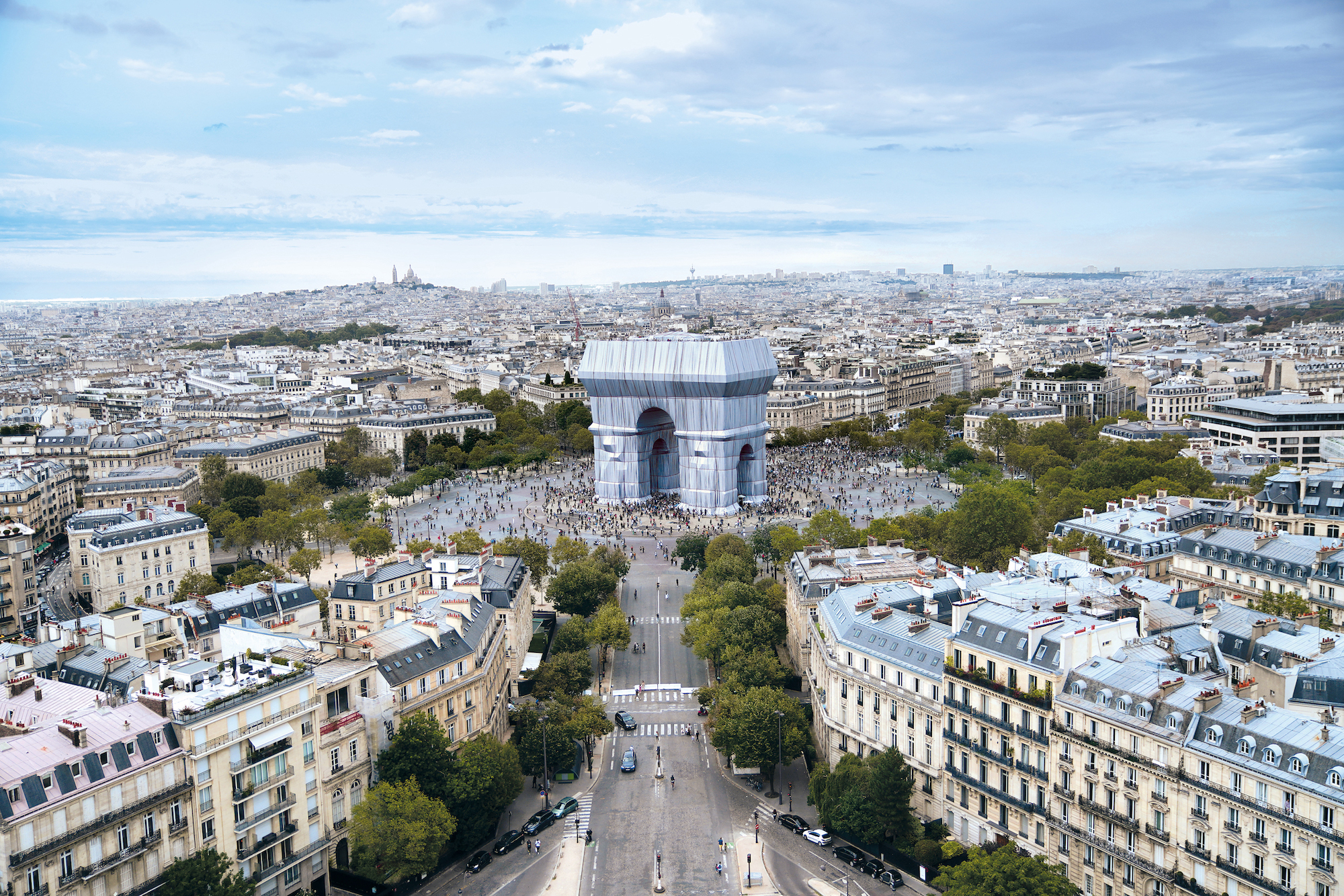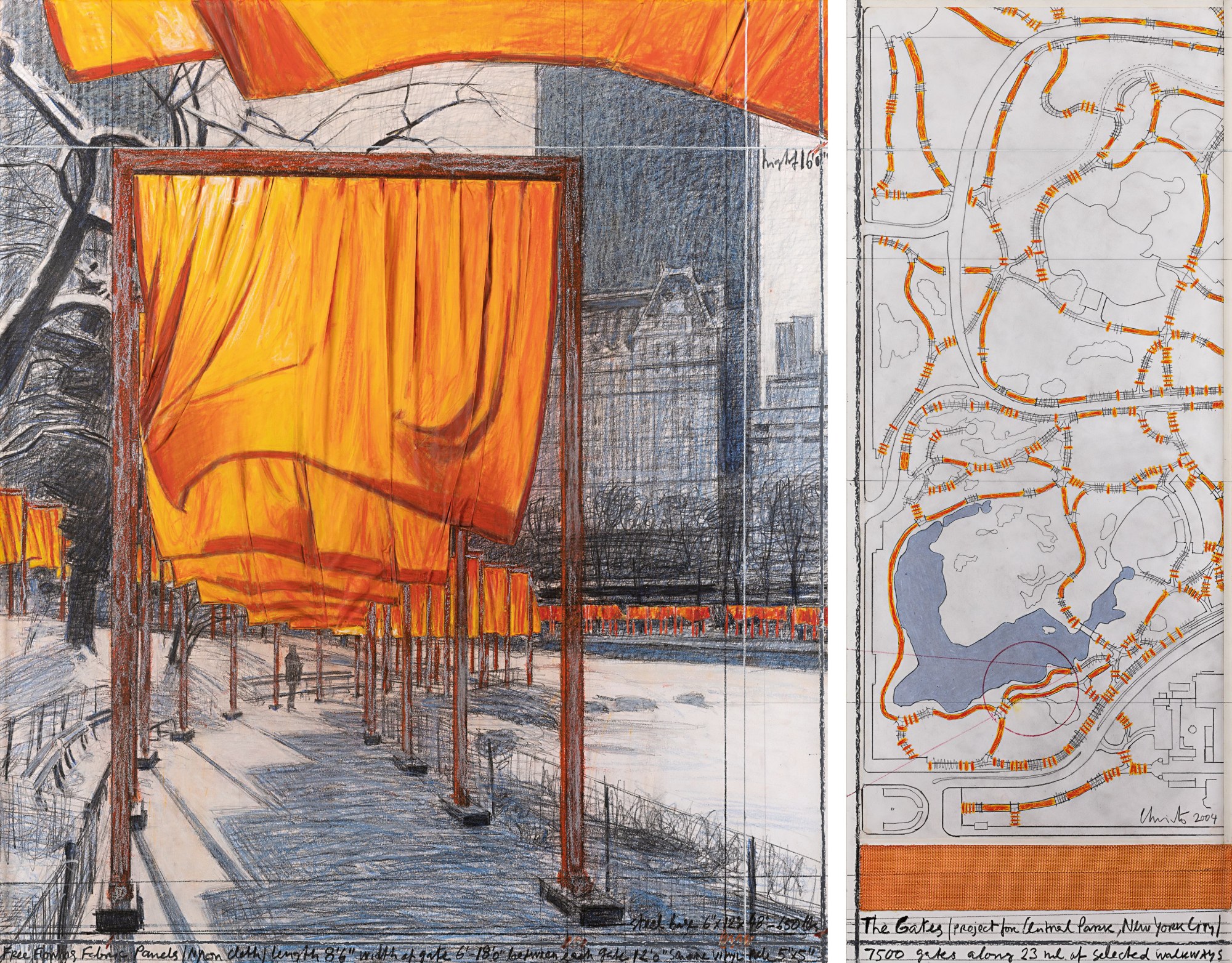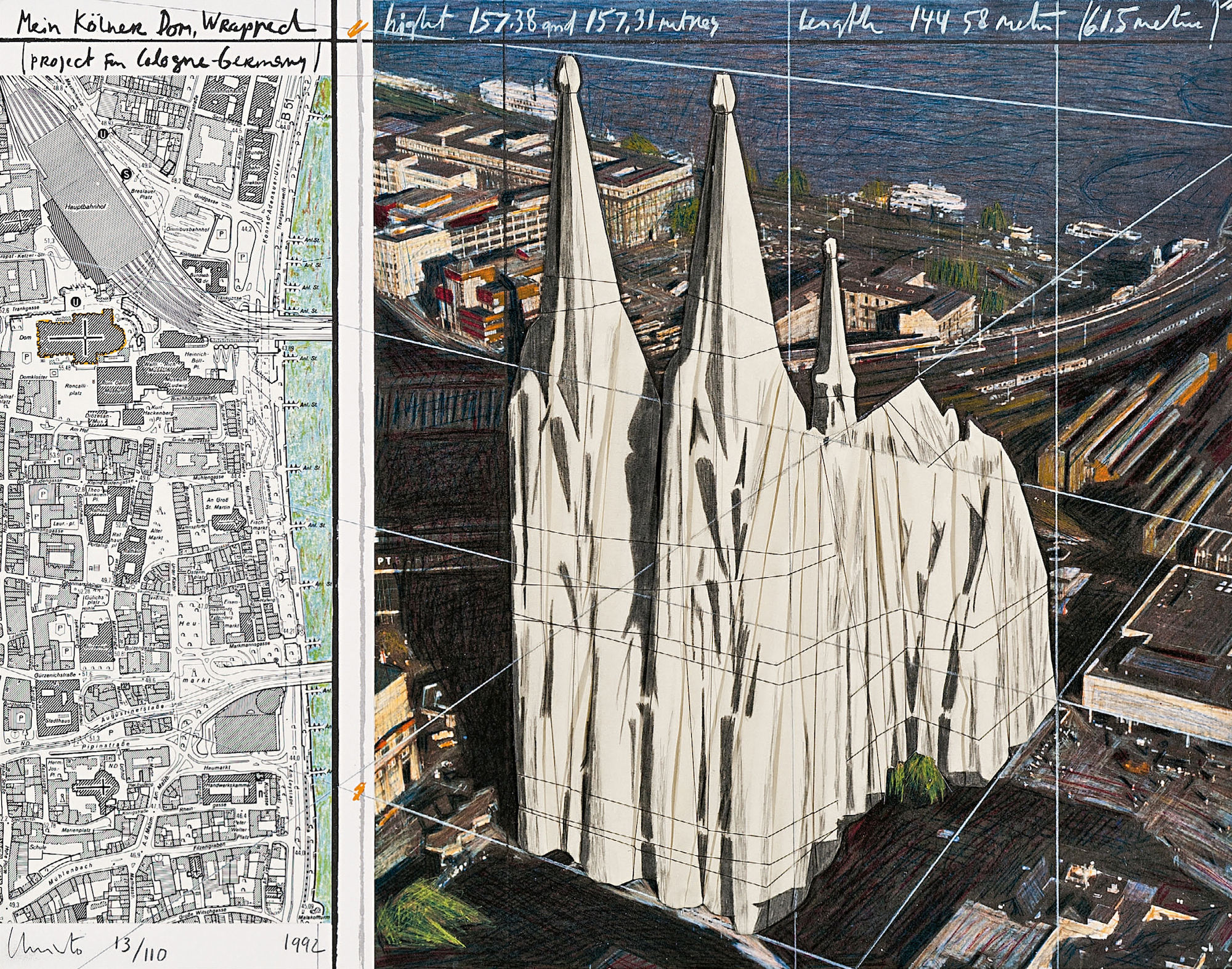The late artists Christo and Jeanne-Claude were dreamers and innovators, but somehow they were grounded in their expectations of what they could bring to life.
In 2014, Christo once told a reporter, “The most important part to grasp is that all of these projects are originated by us — I do not do commissions. Jeanne-Claude always said that these projects exist simply because we want to see them. They’re totally irrational and absolutely unnecessary. They cannot be bought, you can’t charge for tickets. The world can exist without them. And this carries a kind of absolute freedom.”
In fact, Christo and Jeanne-Claude never received support through sponsors or donations for their expensive, elaborate ideas. Instead, they sold sketches and a number of other works created at the earlier stages to finance everything.

At the Kunstpalast in Düsseldorf, Germany, the new show “Christo and Jeanne Claude. Paris. New York. Crossing Borders” presents said artistic autonomy in many forms: from the posthumous wrapping of the Arc de Triomphe in Paris (2021) to the orange frames and billowing fabric of “The Gates” in New York City’s Central Park, audiences have expressed a range of reactions. The twosome have evoked both awe and anger from the staging process to the end result. Yes, the couple had to wear bullet-proof vests during the process of wrapping the Reichstag in Berlin, Germany.
Perhaps life for them consistently held some level of drama: Christo Vladimirov Javacheff was born in Bulgaria in 1935 — coincidentally on the same day and same year as Jeanne-Claude Denat de Guillebon in Morocco. Christo received his education at the Sofia Academy of Art and then fled communist Bulgaria. Via Vienna and Geneva, he ended up in Paris in 1958. Through a portrait commission of Jeanne-Claude’s mother in Paris, Christo met Jeanne-Claude.

Kay Heymer, Curator of the exhibition says, “They got to know each other and fell in love. Christo in a way initiated Jeanne-Claude into the world of art. Rather quickly, they started to work together. For instance, a large installation was made in reaction to the iron curtain: the Berlin Wall. They made this installation called ‘The Iron Curtain’ consisting of oil barrels that blocked the Rue Visconti in Montparnasse in Paris—a street where many artists in the 19th Century had been living. Their first public performative action.”
Site-specifics played an instrumental role in what they aimed to achieve. It’s no coincidence that this exhibition at the Kunstpalast was the last Christo authorized before passing away in 2020. Since 1961, the couple maintained ties to the German Rhineland, where gallerists and collectors supported their work, and they established relationships with fellow artists Nam June Paik and Joseph Beuys. In 1963 in Düsseldorf, Christo and Jeanne-Claude showed a wrapped Volkswagen Bug. Heymer confesses, “That car was wrapped for four days only. The owner wanted the car back and wanted to drive it instead of having a sculpture.”

From an iconic German auto, their “covered” projects evolved into more complicated undertakings, sometimes lasting decades to plan, though ephemeral when finally realized. But for them, the communication, the talks, and Christo’s drawings all served their purposes.
“It was not just the wrapped Reichstag that was the work. But the entire process of discussions with the public, politicians, acquiring the authorization to do this. It was a complex process. It took hundreds of people to be involved, to be asked and to be convinced that it was a good idea to pursue this project,” Heymer says.
This current show presents both the finished projects as well as those that didn’t make it to fruition. According to Heymer, there were about “27-28 large-scale projects in their lifetime and there were at least as many projects they proposed but weren’t realized.” While the Reichstag, The Gates and the Arc de Triomphe stand out as some of their greatest artistic achievements, the unrealized proposals for the Mastaba in Abu Dhabi (begun in 1977) and the Cologne Cathedral (begun in 1992) will also be on display in this exhibition. Though their art could never be reproduced, photographs by Wolfgang Volz — who worked personally with Christo and Jeanne-Claude and captured their worldwide installations — provide the visual proof that these works actually existed.

As a side note to those wondering what became of the mass quantities of fabric, rope and other materials used for their artwork, Christo and Jeanne-Claude upheld a practice of sustainability: after their projects were dismantled and removed, they recycled all components.
And for those fortunate enough to visit this exhibition, the curators attempted to bring out the essence of Christo and Jeanne-Claude’s one-of-a-kind, imaginative concepts, like “…the richness and poetry of artistic visions,” says Heymer. Their Mastaba proposal for Abu Dhabi–originally conceived in 1977–would make it the largest sculpture in the world if it gets built in the desert: 410,000 barrels of various colors stacked on top of each other. A small-scale replica of the Mastaba currently stands in one of the exhibition halls.

“Christo and Jeanne-Claude were real artists in the sense that they had no purpose for their projects,” recalls Heymer. “They just wanted to do it because it struck them as aesthetically challenging to change the appearance of a city by wrapping a major building or changing the appearance of a landscape, and these projects changed our perception of the world in a way — in a positive way.”
Christo and Jeanne Claude. Paris. New York. Crossing Borders runs from September 7, 2022 until January 22, 2023 at the Kunstpalast in Düsseldorf, Germany.
